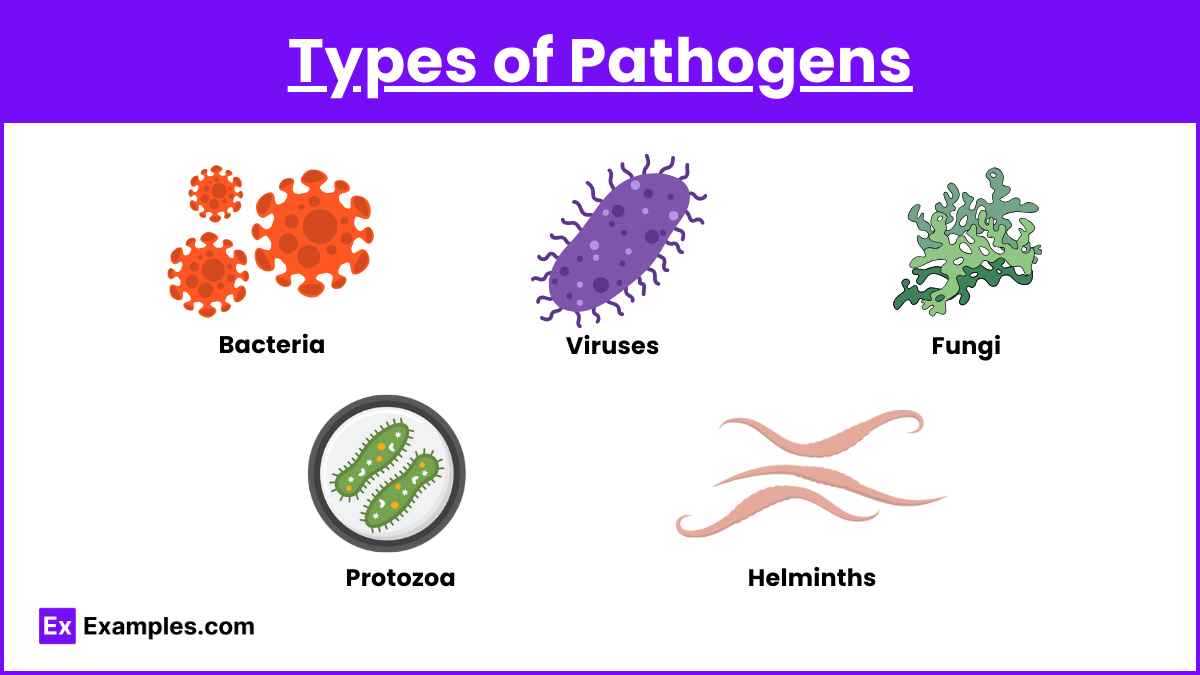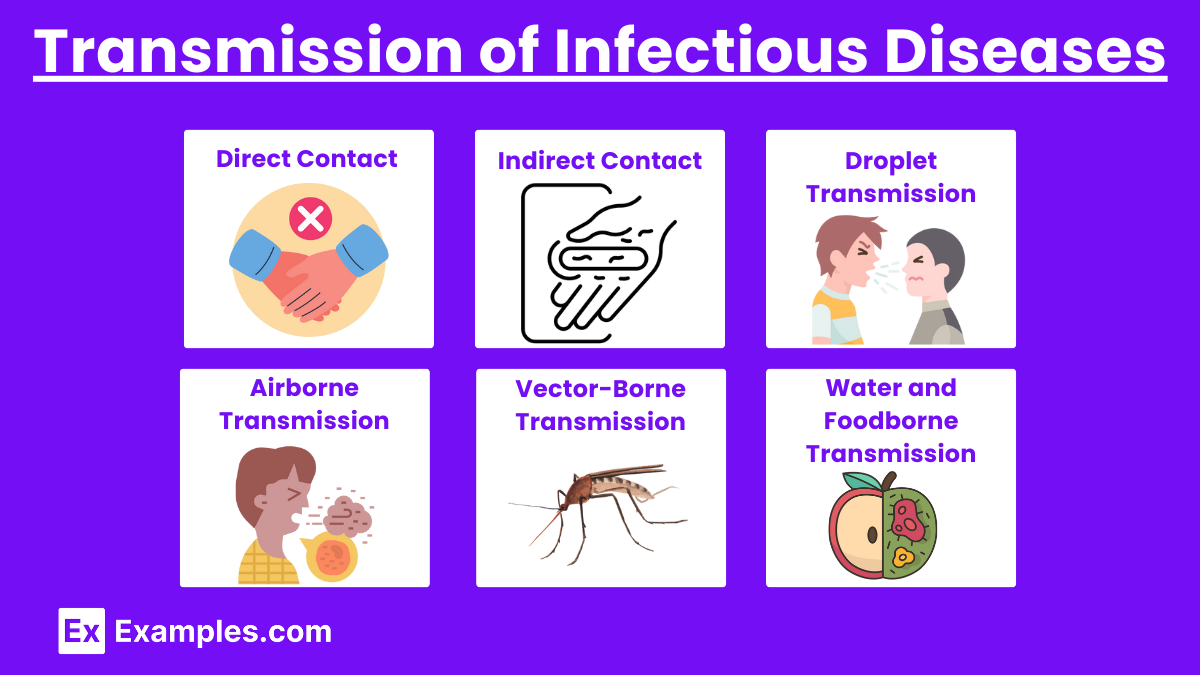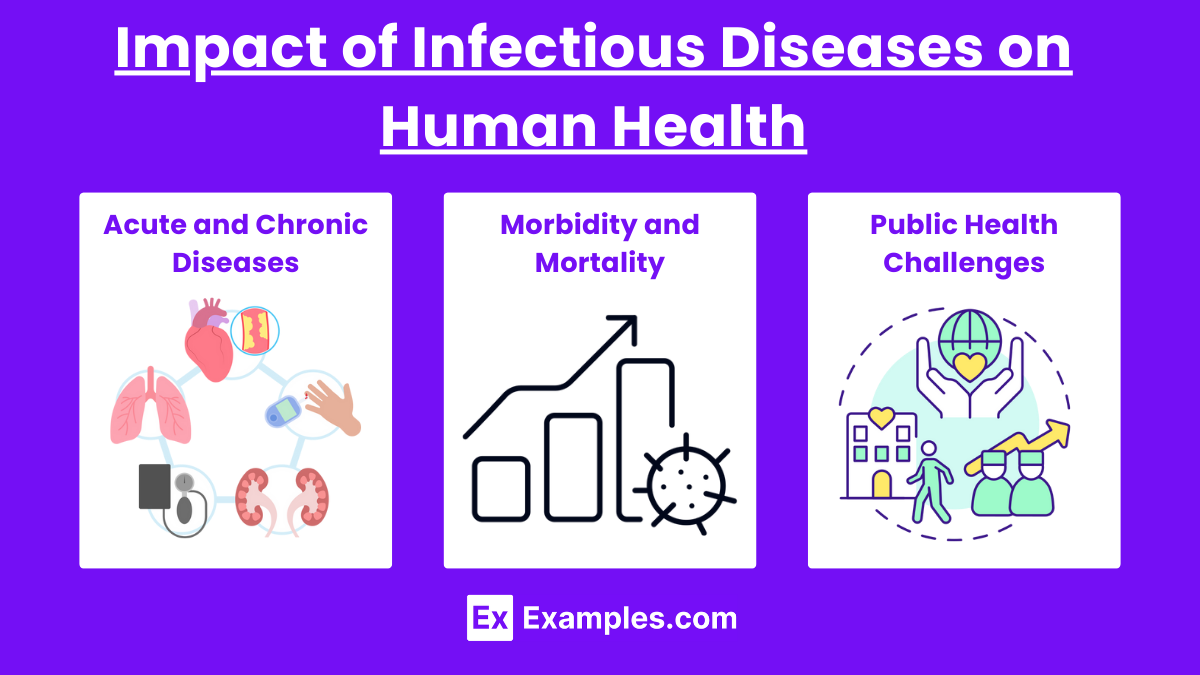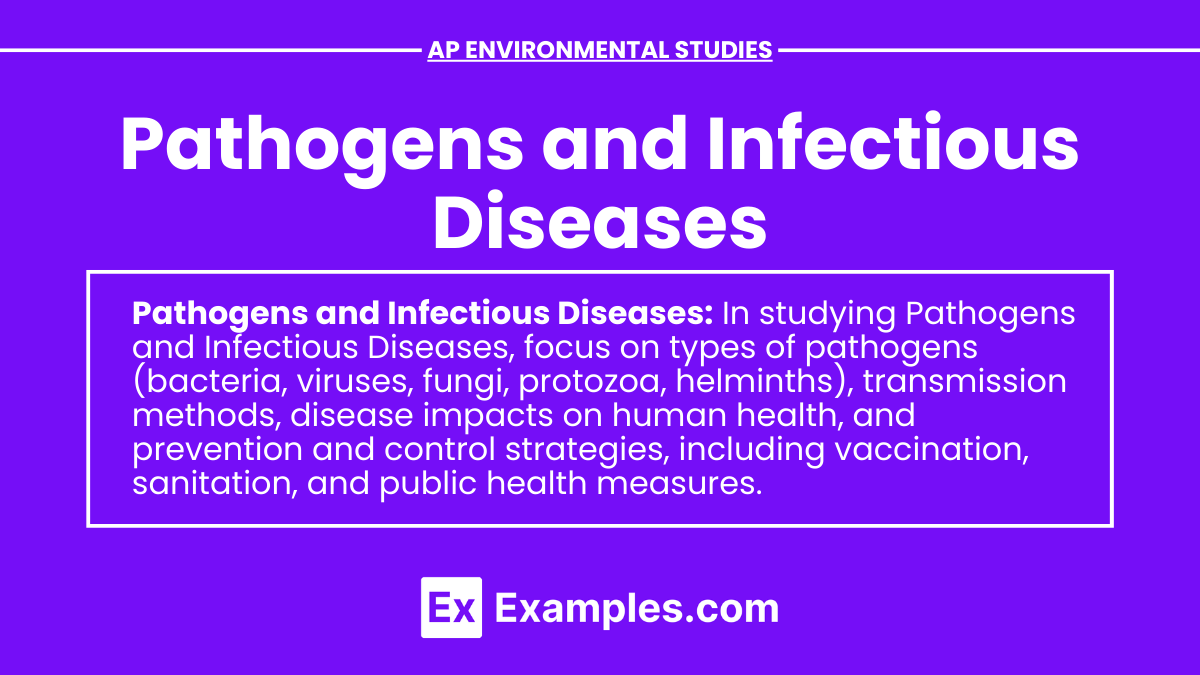In AP Environmental Science, understanding pathogens and infectious diseases is crucial as they impact ecology, ecosystems, biodiversity, and the biosphere. Pathogens such as bacteria, viruses, and fungi disrupt natural processes, causing diseases that affect both humans and wildlife. These disruptions can lead to significant ecological imbalances, threatening the health and stability of our ecosystems and reducing biodiversity. Protecting the biosphere requires comprehensive knowledge of these microorganisms and their effects.
Learning Objectives
By studying pathogens and infectious diseases, students will learn how these agents impact organisms, contribute to climate changes, and affect flora and fauna. They will explore transmission modes, disease prevention, and control strategies. Understanding how pathogens alter the balance within ecosystems will highlight the importance of protecting biodiversity. This knowledge is essential for developing solutions to mitigate the effects of infectious diseases on human health and the environment, ensuring the stability of our flora and fauna amidst climate changes.
Types of Pathogens

Bacteria
Characteristics:
- Single-celled prokaryotic organisms.
- Can be beneficial or harmful.
- Reproduce rapidly through binary fission.
Examples:
- Escherichia coli (E. coli): Found in the intestines; some strains cause food poisoning.
- Mycobacterium tuberculosis: Causes tuberculosis, affecting lungs and other body parts.
Viruses
Characteristics:
- Non-living entities requiring a host to reproduce.
- Composed of genetic material (DNA or RNA) enclosed in a protein coat.
- Cause a wide range of diseases in humans, animals, and plants.
Examples:
- Influenza virus: Causes the flu, affecting the respiratory system.
- HIV (Human Immunodeficiency Virus): Causes AIDS, impairing the immune system.
Fungi
Characteristics:
- Eukaryotic organisms that can be unicellular (yeasts) or multicellular (molds and mushrooms).
- Reproduce through spores.
- Can cause infections, especially in immunocompromised individuals.
Examples:
- Candida albicans: Causes yeast infections.
- Aspergillus: Causes respiratory infections, especially in people with weakened immune systems.
Protozoa
Characteristics:
- Single-celled eukaryotic organisms.
- Often parasitic, living in or on a host organism.
- Transmitted through contaminated water, food, or vectors like insects.
Examples:
- Plasmodium falciparum: Causes malaria, transmitted by Anopheles mosquitoes.
- Giardia lamblia: Causes giardiasis, a waterborne intestinal infection.
Helminths
Characteristics:
- Multicellular parasitic worms.
- Live inside host organisms, causing various diseases.
- Transmitted through contaminated food, water, or soil.
Examples:
- Ascaris lumbricoides: Causes ascariasis, an intestinal infection.
- Schistosoma: Causes schistosomiasis, affecting the urinary and intestinal tracts.
Transmission of Infectious Diseases

Direct Contact
- Person-to-person: Through touching, kissing, or sexual contact.
- Animal-to-person: Through bites or scratches from infected animals.
- Mother-to-child: During pregnancy, childbirth, or breastfeeding.
Indirect Contact
- Surface contamination: Pathogens on surfaces or objects (fomites) can infect individuals who touch them.
Droplet Transmission
- Coughing and Sneezing: Pathogens in respiratory droplets can infect individuals within close proximity.
Airborne Transmission
- Aerosols: Pathogens in tiny droplets or dust particles can remain suspended in the air and be inhaled.
Vector-Borne Transmission
- Insects: Pathogens transmitted through bites from mosquitoes, ticks, fleas, etc.
Water and Foodborne Transmission
- Contaminated Water and Food: Pathogens ingested through contaminated water or food.
Impact of Infectious Diseases on Human Health

Acute and Chronic Diseases
- Acute Diseases: Short-term infections with rapid onset, such as the flu or cholera.
- Chronic Diseases: Long-term infections that may persist for years, such as HIV/AIDS or hepatitis B.
Morbidity and Mortality
- Morbidity: Illness and health complications resulting from infections.
- Mortality: Deaths caused by severe infections and their complications.
Public Health Challenges
- Epidemics and Pandemics: Widespread outbreaks causing significant health crises.
- Antibiotic Resistance: Overuse and misuse of antibiotics leading to resistant strains of bacteria.
- Emerging Infectious Diseases: New or re-emerging diseases posing significant health threats.
Prevention and Control of Infectious Diseases

Vaccination
- Immunization: Prevents infections by stimulating the immune system to recognize and fight pathogens.
- Herd Immunity: Reduces disease spread by immunizing a significant portion of the population.
Sanitation and Hygiene
- Clean Water: Ensuring access to safe drinking water.
- Proper Waste Disposal: Reducing environmental contamination.
- Hand Hygiene: Regular handwashing to prevent pathogen transmission.
Public Health Measures
- Surveillance: Monitoring disease outbreaks to implement timely interventions.
- Quarantine and Isolation: Separating infected individuals to prevent disease spread.
- Health Education: Promoting awareness about disease prevention and control.
Vector Control
- Insecticides: Using chemicals to reduce vector populations.
- Environmental Management: Eliminating breeding sites for vectors like mosquitoes.
Role of Environmental Factors
Climate Change
- Temperature and Humidity: Affect the survival and reproduction of pathogens and vectors.
- Extreme Weather Events: Increase the risk of waterborne and vector-borne diseases.
Habitat Disruption
- Deforestation: Alters ecosystems, leading to increased contact between humans and wildlife, and potential pathogen spillover.
- Urbanization: Overcrowding and inadequate infrastructure increase the risk of infectious disease transmission.
Biodiversity Loss
- Ecosystem Imbalance: Loss of predator species can lead to an increase in vector populations, raising disease risk


